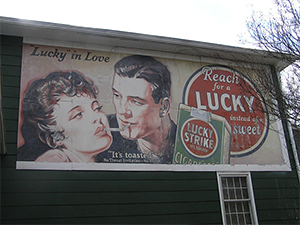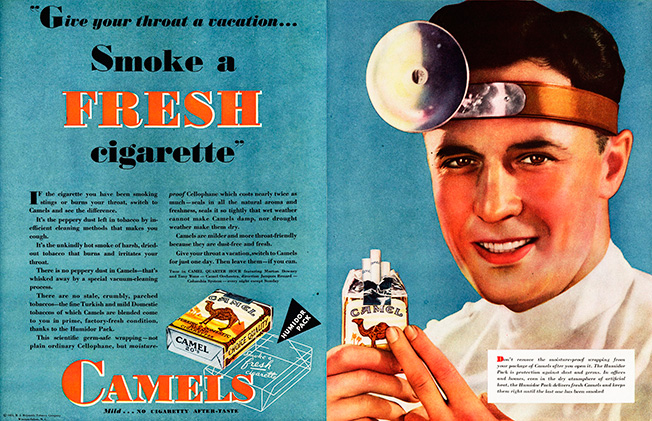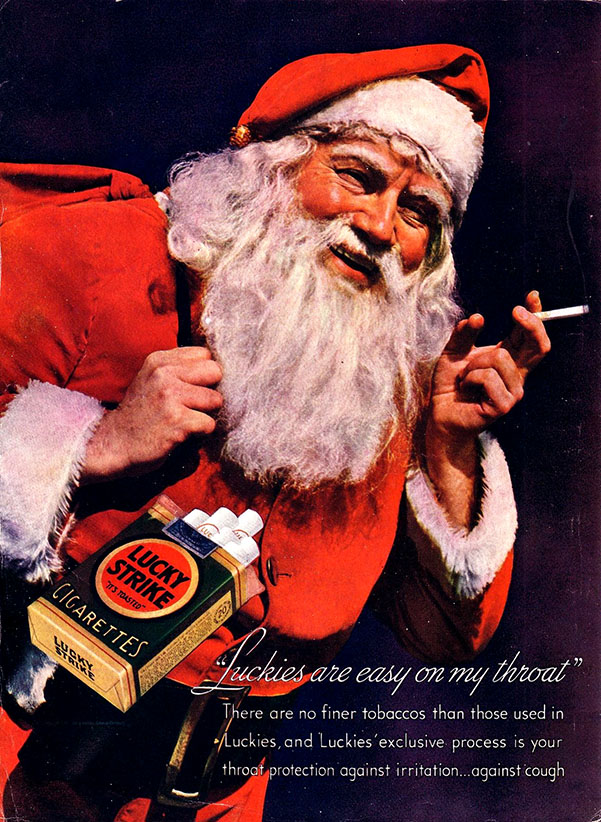
Tobacco Billboards: History of Restrictions & Tactics
Tobacco billboards have been present since the beginning of out-of-home marketing.
When looking at vintage billboards, you’ll most likely come across a multitude of artwork that showcases tobacco products. Tobacco was up front in everyone’s face during the mid-20th century. You’re probably familiar with the aesthetic of those ads—often a beautiful woman and/or man holding a blazing cigarette with a happy-go-lucky smile on their face.
In some situations, tobacco companies went even far as using pseudoscience to sell people on the idea that cigarettes are actually healthy and invigorating for your body. Take a look at the billboard below. It features a doctor providing an endorsement of Camel Cigarettes. As the public grew more conscious of the health risks that are tied with cigarettes, advertising agencies came up with different messaging in an attempt to keep customers buying.

The TV show Mad Men actually has a scene where the owners of Lucky Strike cigarettes are receiving advice on how to market their brand in the midst of great regulations. The main character of the show, Don Draper, comes up with a unique strategy for how they can still engage consumers with their product, and that’s by focusing on the characteristics of the tobacco rather than its effects. Using tantalizing words like “toasted tobacco” helps people forget about the potential health risks.

Beyond using doctors, cigarette advertisers also utilized other trustworthy figures, such as Santa Claus.
Below is an example showing Santa Claus enjoying a pack of Lucky Strikes. There are multiple advertisements like this that can be found, featuring a variety of cigarette brands.
It was only until the late 20th century that tobacco companies started to experience serious restrictions on their ability to advertise. Truth Initiative has a full page that shows the timeline of these restrictions ranging all the way to 1967. 1997 saw the advent of the Master Settlement Agreement (MSA), which imposed massive restrictions on tobacco companies’ ability to market their products. Ultimately, the MSA brought about methods to reduce the amount of tobacco consumption across America, especially with kids under the age of 18.
According to Public Health Law Center, in 46 states, billboards of tobacco products are totally banned if they are not in proximity to a retail establishment that sells them. A couple other restrictions include paid product placements and the use of cartoon characters and marketing tactics that target those under the age of 18.
The only states to not be included on the MSA were Florida, Minnesota, Mississippi, and Texas, but that was because these states already had their own tobacco settlements before the MSA.
Outside of the United States, tobacco companies have more opportunities to utilize billboard advertising, but there are still restrictions that prevent companies from being direct with their product. Nowadays, to avoid legal trouble, cigarette brands are less explicit about the product they are selling. Instead, they give open-ended messaging, such as Marlboro’s “Maybe” campaign in Germany.
Keep up to date with our blog for more discoveries into the billboard industry.

